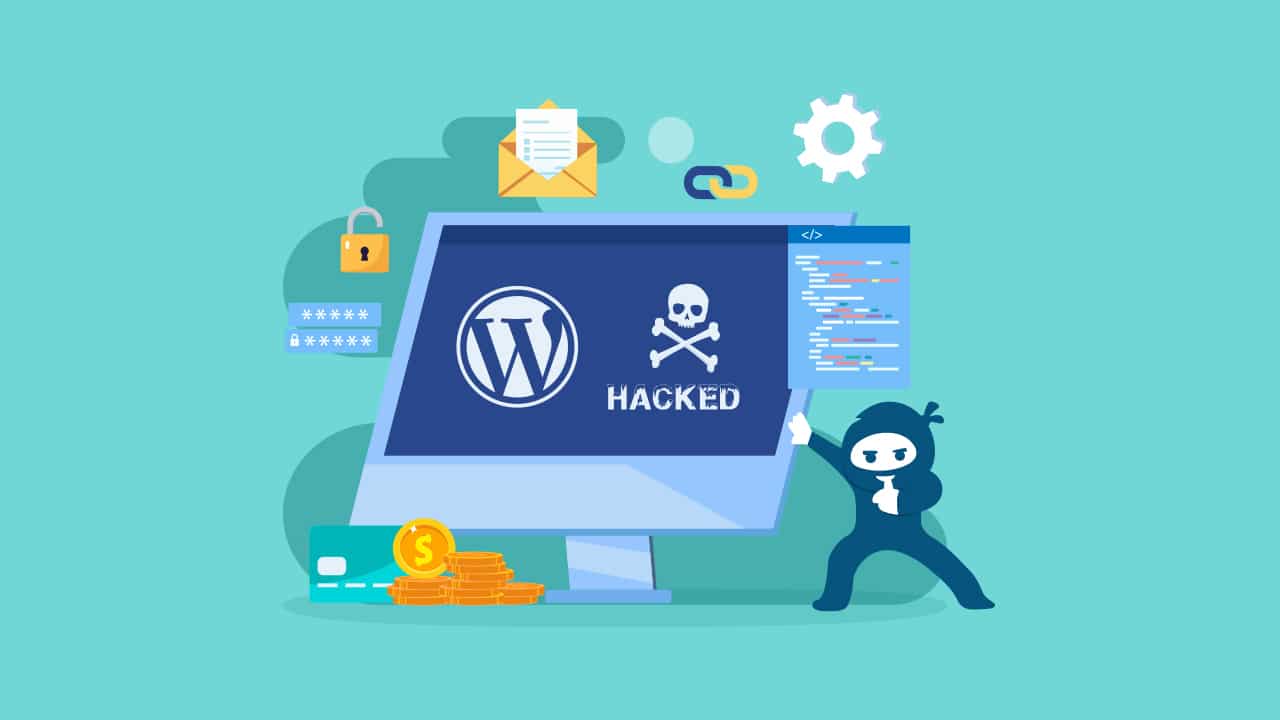WordPress, a versatile content management system, stands as the backbone of millions of websites globally. Its user-friendly interface and expansive plugin ecosystem make it a preferred choice for creators, bloggers, and businesses alike. However, the widespread adoption of WordPress also makes it a prime target for cyber threats, calling for a robust security strategy.
In this comprehensive guide, we embark on a journey to not just explore, but deeply understand the art of securing your WordPress site. We’ll uncover the nuances of why security is paramount, explore the intricate causes behind potential threats, delve into the motivations that drive hackers, and equip you with a thorough understanding of how to fortify your digital citadel.
Why Would Someone Want to Hack Your WordPress Site?
Understanding the motivations behind cyber attacks is vital for deciphering the mind of an adversary. By recognizing these motives, you can better guard your WordPress site against potential threats and develop strategies to protect your digital assets.
Let’s unravel the layers of intrigue that drive hackers to hack your WordPress site:
1. Data Theft:
Your WordPress site might store valuable data, ranging from personal user information to business-related data. Hackers may target your site to steal this sensitive information, which can be used for identity theft, fraud, or sold on the dark web for profit.
2. Financial Gain:
One of the primary motives behind hacking is financial gain. Attackers may seek to exploit your website for illicit activities, such as cryptocurrency mining, spam distribution, or launching phishing campaigns. Your compromised site becomes a tool in their quest for monetary rewards.
3. SEO Manipulation:
Hacking your site provides attackers with an opportunity to manipulate your content for SEO purposes. They may inject malicious links or spammy content to boost their own websites’ rankings, leveraging your site’s credibility for their gain.
4. Political or Ideological Reasons:
Some hackers are motivated by political or ideological reasons. They may target your site to deface it, spread propaganda, or disrupt your online presence as a means of conveying a message or promoting their cause.
5. Reputation Damage:
Competitors or resentful individuals might attempt to tarnish your online reputation by compromising your site. They may deface it, spread false information, or engage in activities that could damage your credibility and trustworthiness.
6. Resource Exploitation:
Hackers often seek to exploit your website’s resources, such as server bandwidth or processing power, for their own purposes. This could include hosting illegal content, running botnets, or launching distributed denial-of-service (DDoS) attacks.
7. Ransom Attacks:
Ransomware attacks involve encrypting your site’s data and demanding payment for its release. Hackers see your WordPress site as a lucrative target, holding your valuable information hostage until their demands are met.
8. Infiltrating Networks:
Your WordPress site could serve as an entry point to a larger network. Once compromised, hackers might pivot to other connected systems, aiming to infiltrate corporate networks, databases, or interconnected websites.
Signs Your WordPress Site is Breached
In the dynamics of cybersecurity, staying vigilant is the key to maintaining a secure WordPress site. Regular monitoring for these signs of a potential breach empowers you to take swift action, minimizing the impact of security incidents.
Explore the subtle and overt signs that may indicate your digital domain is under siege. Keep a vigilant eye for these indicators to promptly address and mitigate potential threats:
1. Unexpected Website Behavior:
- Slow Loading Times:
If your site suddenly experiences sluggish loading times or performance issues, it could be a sign of a compromise. Malicious activities might be consuming server resources.
- Unexplained Content Changes:
Unauthorized alterations to your website’s content, layout, or appearance may signal a breach. Check for unexpected modifications regularly.
2. Suspicious User Accounts:
- New or Altered User Profiles:
Keep an eye on your user list for any unexpected additions or modifications. Hackers may create new administrator accounts to gain control.
- Unusual User Activity:
Monitor user activity logs for irregularities, such as unexpected logins or suspicious actions. Unusual login times or locations could indicate unauthorized access.
3. Irregularities in Server Logs:
- Unexplained Server Resource Usage:
Sudden spikes in server resource usage, such as increased bandwidth or CPU utilization, may indicate malicious activities like a DDoS attack or resource exploitation.
- Unusual Access Patterns:
Analyze server access logs for abnormal patterns. Frequent and unexpected requests or access from unfamiliar IP addresses could be red flags.
4. Security Warnings from Tools or Plugins:
- Alerts from Security Plugins:
If you have security plugins installed, pay attention to any alerts or notifications they provide. These could include detection of malware, suspicious file changes, or unauthorized access attempts.
- Google Search Console Warnings:
Google may flag compromised websites. Regularly check Google Search Console for security-related messages and take prompt action if issues are identified.
5. Strange or Unauthorized Code:
- Unfamiliar Scripts or Files:
Inspect your website’s files and directories for any scripts, files, or code that you didn’t add. Hackers may inject malicious code to compromise your site.
- Unexpected Redirects:
If your site redirects visitors to unexpected or malicious URLs, it’s a clear sign of a compromise.
6. Email Issues:
- Reports of Spam:
If users or visitors report receiving spam emails seemingly from your domain, it may suggest a compromise. Check email logs and configurations for any unauthorized activity.
- Email Bounces and Delivery Failures:
An increase in email bounces or failed deliveries could indicate that your site is being used to send spam.
7. Phishing or Defacement:
- Changes in Website Appearance:
A sudden change in the appearance of your website, defacement, or the presence of unauthorized content may indicate a compromise.
- Reports of Phishing Attempts:
If users report phishing emails seemingly originating from your site, it’s crucial to investigate and take corrective measures.
Fortifying Your Digital Citadel: A Holistic Approach
Dive deep into the core of WordPress security measures as we explore a comprehensive approach to fortify your digital citadel.
1. Regularly Update Your Arsenal:
Learn the art of regular updates for WordPress, themes, and plugins. Transform this routine task into a powerful shield against evolving threats by understanding the importance of staying ahead of potential vulnerabilities.
2. Strengthening Your Gates:
Passwords are your first line of defense. Discover the secrets of enforcing strong, unique passwords and implementing Two-Factor Authentication (2FA) to create an impenetrable fortress.
3. Fortifying the Perimeter:
Change default login URLs and limit login attempts. Make your login impenetrable by understanding how these simple changes can thwart even the most determined attackers.
4. Safeguarding the Treasure (Regular Backups):
Schedule regular backups as a digital insurance policy. Ensure a swift recovery in the face of adversity by diving into the intricacies of backup strategies and their crucial role in maintaining data integrity.
5. Shields Up: Security Plugins
Explore the world of security plugins such as Wordfence, Sucuri Security, iThemes Security, Jetpack by WordPress.com, and All In One WP Security & Firewall. Each plugin is a specialized warrior in your digital army. Dive into the features that make them indispensable and understand how they contribute to your overall security posture.
6. SSL Encryption: The Invisibility Cloak
Enable SSL encryption for an added layer of protection. It’s not just a certificate; it’s an invisibility cloak for your data. Uncover the technicalities of SSL encryption and how it secures data transmission.
7. Watchtower Guards (Monitoring User Activity):
Vigilantly monitor user activity and set up alerts for suspicious behavior. Transform user activity monitoring into a preemptive strike against potential threats. Understand the nuances of recognizing irregularities and proactively addressing them.
Conclusion
Congratulations! You’ve journeyed through the realms of WordPress security, equipped with knowledge and tools to fortify your digital citadel. As you embrace the continuous evolution of security measures, remember that your WordPress site is not merely a website; it’s a testament to your digital legacy. With these strategies, WordPress plugins, and a vigilant eye, your online presence stands fortified against the tides of cyber threats. May your WordPress fortress endure and thrive in the vast digital landscape, where security is not just a necessity but a dynamic, ever-evolving journey.



